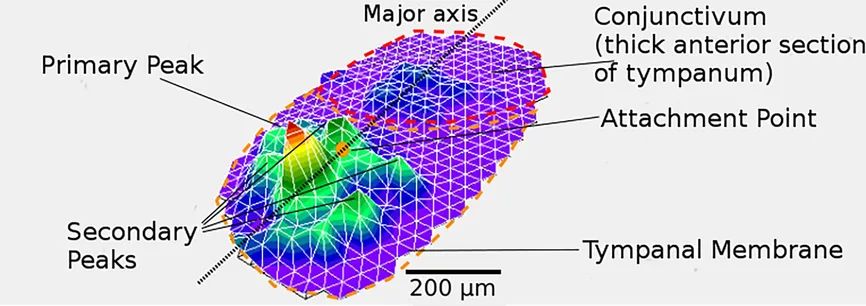Table of Contents

Medically reviewed by Amy Kwan, PT
Tech neck is a term used to describe chronic neck pain caused by continuously straining the neck muscles while using technology—electronic devices like phones, tablets, and computers. Over time, tech neck can damage your muscles and misalign your spine, leading to poor posture, joint inflammation, pinched nerves, and herniated discs.
Tech neck—also called text neck—can result from looking down at your phone or other electronic devices for prolonged periods of time.
Your head is heavy, and your neck muscles are designed to hold it upright. Tilting the head down while working at a computer or scrolling through your phone strains your neck muscles. This can make your neck feel sore, painful, or stiff, and lead to posture problems.
According to a 2019 survey of college students, participants who spent more time on their phones experienced more severe neck pain.
Effects of Tech Neck
Tech neck can lengthen the neck muscles and shorten your chest muscles, causing a hunched posture that puts more pressure on your neck and slumps your shoulders. This misalignment leads to shoulder and neck pain, soreness, and stiffness. Pressure on the spine can also pinch nerves that cause neck pain, lower back pain, and numbness or tingling of the hands.
In addition, forward-slumping shoulders can pinch and rub the tendons of the rotator cuff—muscles and tendons surrounding your shoulder joint. Over time, this irritation can lead to inflammation and shoulder pain, known as rotator cuff tendonitis. People with rotator cuff injuries are more at risk.
Tech neck can also cause issues beyond your neck and shoulders. Extra spinal pressure in your neck can lead to lower back pain, headaches, and herniated discs (slipped or bulging discs). Altered neck muscles and poor posture can also strain jaw joints and muscles, creating temporomandibular joint (TMJ) pain.
Lastly, tech neck could lead to cervical kyphosis—the loss of the natural C-shaped curvature of your neck. In cervical kyphosis, the curve straightens or even reverses, with the C-shape opening toward the front of your body.
Related: The 12 Best Pillows for Neck Pain of 2023
How to Prevent Tech Neck
To help prevent tech neck, be mindful of your posture while on your phone, computer, or tablet. Hold your phone at eye level so you don’t have to look down and bend your neck. It’s easier to maintain this posture if you sit in a chair. It also helps to take frequent breaks from electronic devices where you stand up and move.
To avoid tech neck from computer use, position your monitor or screen to look straight at it, not bending your neck down or forward.
Other ways to improve your computer posture include:
-
Place your screen 20-30 inches away from your eyes (about an arm’s length)
-
Use a computer monitor or laptop stand to help elevate your screen to the right level (or stack some books)
-
Sit with your head, hips, and spine stacked
-
Keep your wrists straight and your elbows bent at about 90-degree angles
-
Keep your knees in line with your hips and your feet flat on the floor
You may also want to consider products designed to help prevent tech neck and promote healthy posture, like:
Tech Neck Exercises and Stretches
A 2016 study of office workers with tech neck found completing shoulder and neck stretches five times a week helped reduce neck pain and improve neck function after one month. Regular stretching can also help build strength in your neck and shoulders to help tech neck.
Here are some tech neck stretches and exercises you can complete every day to help relieve tension:
Chin Tucks
-
While sitting or standing, keep a straight spine and your chin parallel to the floor.
-
Pull your head back so your chin lowers (it should look like you’re making a double chin with your chin still parallel to the floor).
-
Hold for five seconds before releasing.
Shoulder Rolls
-
Start seated or standing with a neutral spine and your hands at your sides.
-
Looking forward, shrug your shoulders up to your ears, but avoid hunching forward.
-
Squeeze your shoulder blades so your shoulders pull back, then pull your shoulders down using your mid-back muscles.
-
Slowly release your mid-back muscles and push your shoulder forward so you return to the neutral position.
Seated Neck Release
-
Sitting or standing up straight, let both arms hang at your sides.
-
Tilt your head to the right, then bring your right hand over your head to rest the middle finger of your right hand over your left ear.
-
Keep your weight on your right arm and gently pull your head to the right.
-
Hold for five seconds before releasing.
-
Repeat on the left side.
Reverse Shoulder Stretch
-
Stand with your feet shoulder-width apart and looking forward.
-
Intertwine your hands behind your back and try to point your thumbs toward the floor as you pull your hands down and open up your chest.
-
Pull your hands towards the ceiling until you feel your biceps and shoulder muscles stretch.
-
Hold for five seconds before lowering your hands to the starting position.
Hand to Forehead Stretch
-
Stand up straight and place your right hand on your forehead (with your fingers pointing to the left).
-
Gently press your hand on your forehead while you simultaneously push your head into your hand. Your head should not move forward, but you should feel the resistance.
-
Hold for five seconds.
Seated Heart Opener
-
Start on the floor, sitting on your heels with a tall spine.
-
Slowly lean back and place your palms on the floor behind you, pointing your fingertips away from you.
-
Lift the chest as your arch your back and push your hips into your heels. If you need a deeper stretch, lower your head behind you.
-
Hold for 10 seconds before releasing your arched back (and lifting your head if you did that).
T-Spine Windmill Stretch
-
Lay down on the floor on your back.
-
Pull your knees toward your chest while you keep your head on the floor.
-
Keeping your knees bent, rotate your hips to the right so your right knee reaches the floor and your left knee is stacked on top.
-
Open your arms into a T position and turn your head to face left, looking toward your left arm.
-
Hold for 10 seconds before you return your knees to your chest.
-
Repeat on the left side.
Child’s Pose
-
Start by sitting on your heels.
-
Let your big toes touch and spread your knees wide so you can rest your torso between your thighs as you reach your arms forward on either side of your head.
-
Let your palms and forehead rest on the floor (your backside should be as close to your heels as possible).
-
Avoid pinching the neck with the shoulders, and relax your upper back and jaw muscles.
-
Hold for 20 seconds.
Repeat these moves as needed or hold stretches as long as you need to relieve any neck tension. If you need additional help managing tech neck pain, contact your healthcare provider. They can refer you to a physical therapist who can recommend other exercises and treatments.
Related: Fight Lower Back Pain With These 3 Stretches You Can Do From Your Desk
A Quick Review
Tech neck is any form of chronic neck or shoulder pain, soreness, or stiffness caused by poor posture while using technology such as phones or computers. Looking down at electronic devices causes the neck muscles to strain and the shoulders to slump forward. Over time, this position can deform your shoulder, chest, and neck muscles and put pressure on your spine.
Luckily, you can prevent tech neck by practicing correct posture while working on computers and keeping your phone at eye level while you text. Taking breaks and stretching the neck, shoulder, and back throughout the day can also help alleviate and prevent tech neck.
For more Health news, make sure to sign up for our newsletter!
Read the original article on Health.

